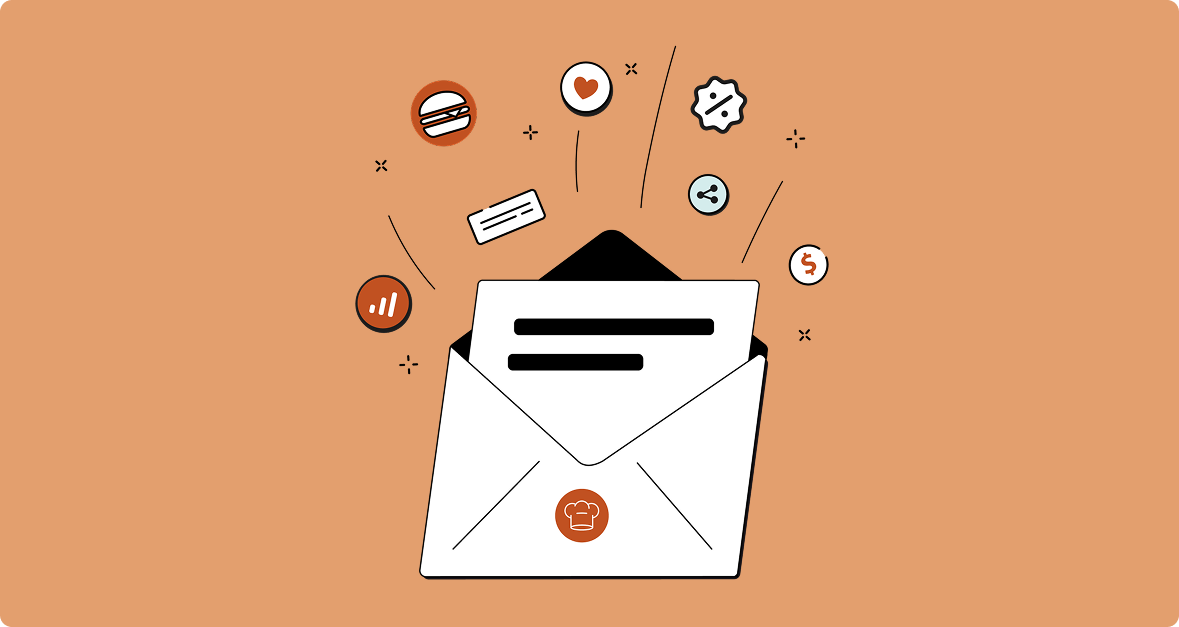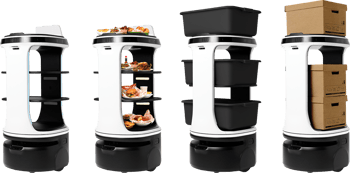AI technology is obviously changing the way we do things in the restaurant business. In fact, there’s a good chance you already have access to sophisticated AI tools in your restaurant, whether you know it or not. A lot of the leading POS (point of sale) systems, inventory management solutions, and marketing services have already incorporated restaurant AI technology into their products.
Of course, having access to these tools is not the same thing as knowing how to use them.
- Do you know about all the AI tools for restaurant management that you have at your fingertips?
- Are you getting everything you should be out of your current restaurant AI technology?
- Are there new and exciting AI tools that you could be using to improve your business operations?
Obviously these are pretty big questions. So we assembled a team of industry experts to help you come up with some answers.
Our Powerhouse Team of Industry Experts
With joint sponsorship from Gordon Food Services (GFS) and the Ohio Restaurant & Hospitality Alliance, we brought together a panel that includes:
- Kathleen White – GFS Head of Marketing
- Spencer Michiel – Back of House consultant and restaurant tech guru
- Hauke Feddersen – VP of Operations for AI-powered kitchen task management platform PreciTaste
Read on for highlights, then check out the whole webinar to hear the whole conversation.
How AI in Restaurants Is Already Changing the Game
Kathleen kicked off the discussion with a few eye-opening figures. She noted that restaurant AI technology is projected to grow into a $3.6 billion dollar industry by 2026. This growth will be driven in part by restaurant chains that are making the leap into AI tech for the first time in 2025. Kathleen reported that “Thirty-five percent of chains plan to implement AI within the next year to improve their business performance.”
She also mentioned that most owners who have already taken the leap are pretty happy with how things are going. She explained that “Sixty percent of those who already have [adopted AI tools], have reported that it has been critical in their improvement.”
So we know that a lot of restaurants are already taking advantage of AI tech. But what does that actually mean?
What Does AI in Restaurants Actually Look Like?
AI in restaurants can take a lot of different forms. AI can describe increasingly familiar tools like chatbots and predictive text (like when you’re writing an email and the next phrase pops up). But Spencer called these tools examples of Narrow AI. “There's no artificial consciousness,” he explained, “and it can't really solve any sort of unfamiliar problem. It does what it's told.”
These tools definitely have their uses in restaurants. Spencer discussed, for example, the potential benefits of ChatGPT for helping with tasks like web building and social media posting.
But, he pointed out, there is another area of innovation called General AI, and this is where a lot of the most exciting developments are happening. As Spencer explained, “General AI is going to be the human-like artificial intelligence.”
In other words, we can expect to see more AI tools in restaurants with the ability to:
- Learn from their experience
- Apply this learned knowledge to something that may happen in the future
- Engage in predictive processes (like forecasting customer demand or inventory needs)
Five Key Takeaways About AI in Restaurants
So how exactly can this increasingly powerful technology help us run more efficient, cost effective, and profitable restaurants?
Our panel of experts offered some amazing insights, actionable tips and real-world examples. These are our favorite moments from the webinar:
1. The Future of AI is All About the Data
AI-powered robotic servers and automated kitchen equipment may seem futuristic, but the real cutting edge is advanced data analysis, said Spencer. He pointed to the growing importance “of collecting complex sets of data from a multitude of different sources.”
As human beings, “We just can't grab that type of information all at once, collate that data, and then produce a realistic and viable action plan for your business,” explained Spencer. As a result, he said, all that potential insight “is going up to the data exhaust pipe.”


Subscribe to Our Monthly Operations Newsletter
Learn how to streamline your processes, cut costs, and run a more efficient restaurant.
This is a problem. That data is incredibly valuable, especially when it comes to planning, prepping, and making decisions. As Hauke explained, “in order to predict something, you need a history, and the best history is the POS system.”
You must be taking full advantage of “the large trove of data in your POS system,” said Hauke. “AI is very successful in this area.”
2. AI Can Help Humans Without Replacing Them
AI can do a lot of things that humans can’t do. But the reverse is also true. Humans can do a lot of things that AI can’t do. Customers still expect personal engagement from your front of house staff. Your kitchen still depends on the people with skill, training, and experience.
AI isn’t supposed to replace your employees. It’s supposed to make it easier for them to do their best work.
“It's a copilot in your business,” Spencer explained. “There are the human elements that are never going to leave the restaurant business.” However, “there are the AI strengths, like performing those complex calculations from a vast amount of data and then predicting what the outcome might be.”
Hauke added that this predictive power ultimately provides kitchen staff with guidance, direction, and improved processes. “This is not replacing the work of the chef,” he explained, “but it's making the life of every crew member a little bit easier by taking all those guessing steps and all those calculation steps out of their work. It just knows exactly – out of the 25 things that we should be doing – what we should be doing right now.”
3. AI Can Lower Kitchen Stress Levels
The kitchen can be an intense place to work, especially during crunch time. Things move quickly. Sometimes there’s yelling. Sometimes there’s colorful language. These conditions can put a lot of stress on your employees, especially those that are just learning the ropes. Hauke described a real-world example.
As we mentioned earlier, PreciTaste provides AI-powered kitchen management solutions that use predictive AI to improve workflow. Hauke recalled a system installation at a new restaurant.
During the installation, Hauke spoke with one of the restaurant’s recent hires about his working experience. The discouraged employee admitted that the kitchen was loud, hectic, and that he spent his entire first day getting yelled at.
“But a few weeks later, with the system there,” said Hauke, “there was no more yelling. It got quiet in the kitchen, because the system was guiding them on what to do next.”
4. AI Is the Key to Better Customer Experience
These days, your guests expect a special experience. Money is tight and diners need compelling reasons to come back to your restaurant.
As Kathleen pointed out, “Consumers are now used to hyper-personalized services in other facets of their lives, and that is really bleeding into what their expectations are for their dining experience.”
Ironically, restaurant AI technology is making it possible to provide a more personalized experience than ever before. Your loyalty program allows you to collect valuable data on customer preferences, visiting patterns, check sizes, and more. AI-powered analytics make it possible to leverage these data points to create more individualized and targeted experiences for your customers.
“I can now target my upselling to my best customers and what they order,” said Spencer. “And so I could do something like a limited time offer during slow times. My Tuesdays are horrible. I can't sell anything on a Tuesday. This person comes in every Friday afternoon and gets this and this and this. They've got a ton of points. I can say, ‘You know what? It's double points day if you come in on Tuesday to order that exact item.’”
5. AI Can Be a Compass That Points Toward Growth
AI tools are also helping restaurant owners with the big picture stuff. Naturally, any time you’re looking to expand your business into a new location, you’re going to conduct extensive market research.
Today, you can gather customer data using AI systems that can tell you way more than the traditional market research process ever could. Spencer pointed to Starbucks as a real-world example.
“Starbucks is producing their own data with their loyalty app,” he said. “They know where their customers are ordering from and how far they're driving.” This means that when Starbucks chooses the location for a new store, they can say with statistical certainty, “We've got so many customers here that are driving 50 minutes – we could put a cafe there.”
If you’re planning to invest in expansion, make sure you’re using the best available tools and data. AI-powered data analysis can help you make better decisions about make-or-break details like the location and size of your new store.
Find The Right AI Tools For Your Restaurant
Ready to make the leap but you’re not sure which AI tools are right for your restaurant? Reach out today for your free, personalized consultation with one of our restaurant tech experts and find out about all your options!





